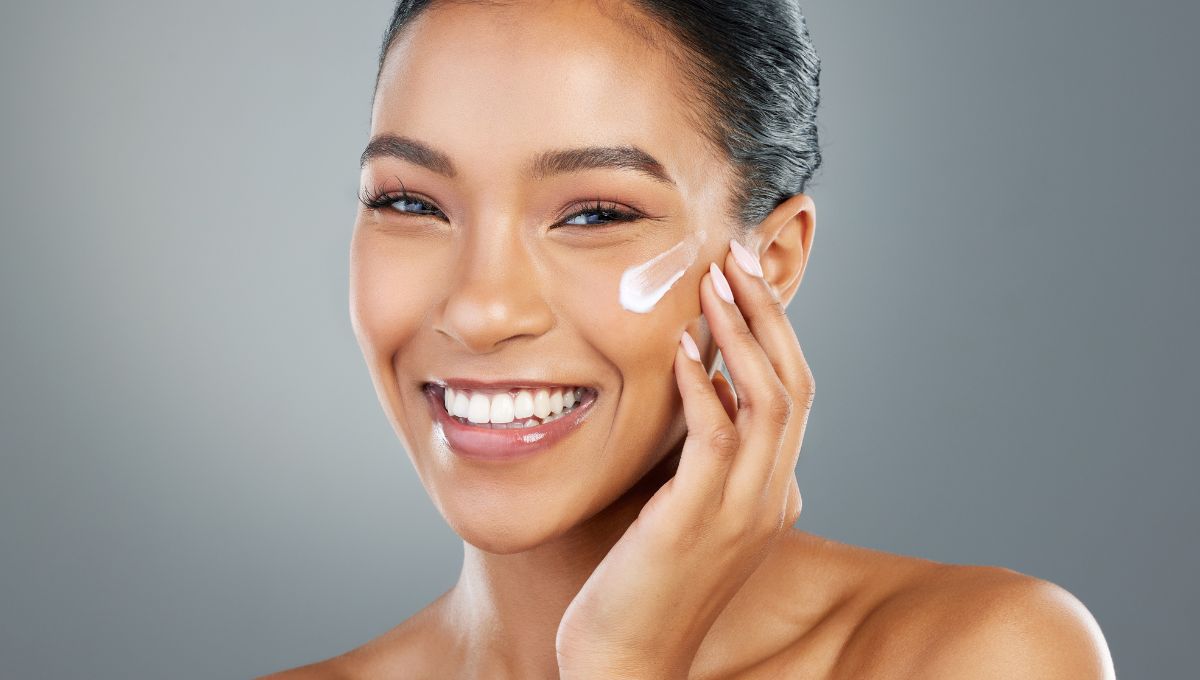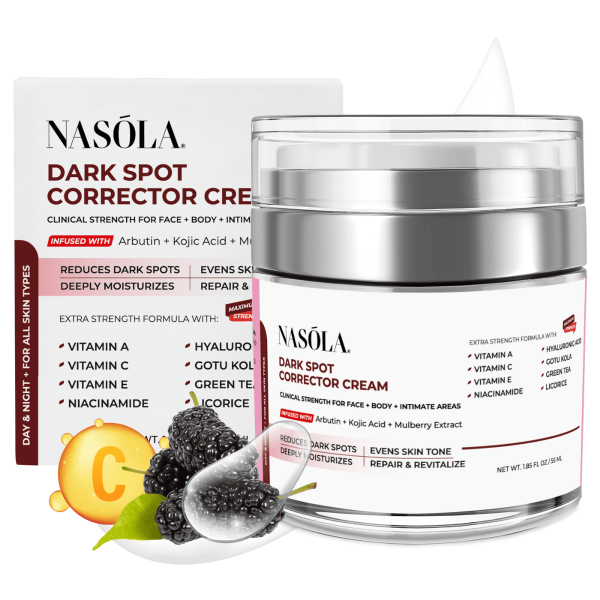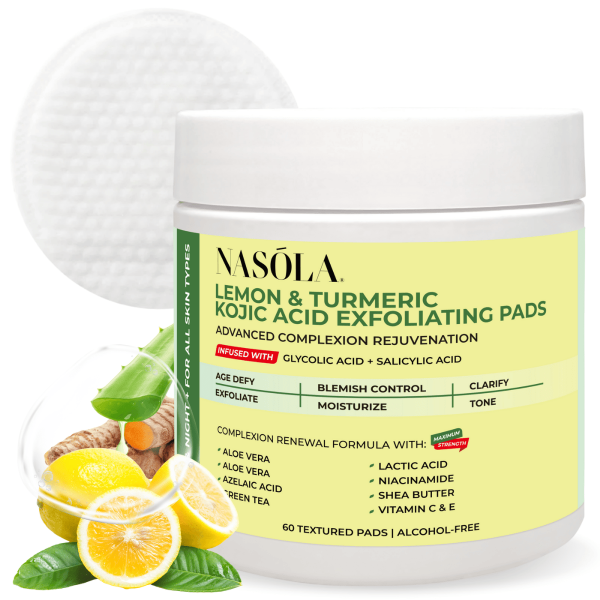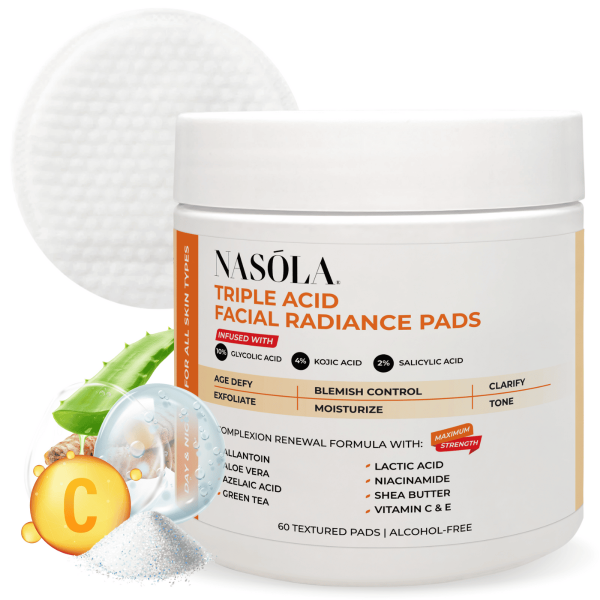Dark spots. Blemishes. Those annoying little reminders that our skin keeps score.
If you’ve been staring at the mirror, wondering why that one specific spot just won’t budge — I see you.
Whether it came as an uninvited guest after a breakout, snuck up on you post-sunburn, or simply decided to move in with age — dark spots can test your patience.
Fortunately, the right dark spot fade cream can be your new skincare bestie in getting back that radiant, even-toned complexion.
In this guide, I’ll walk you through how to choose a fade cream that actually works, the science behind powerhouse ingredients like kojic acid, and the product combos that I’ve seen truly make a difference.
Let’s crack the code to smooth, glow-worthy skin – one spot at a time.
- Why a Good Dark Spot Fade Cream Matters for Hyperpigmentation
- Ingredient Spotlight: Kojic Acid in Dark Spot Fade Cream
- Best Skincare Routine Pairings with Dark Spot Fade Cream
- What to Look for in an Effective Dark Spot Fade Cream
- How Long Does It Take for a Dark Spot Fade Cream to Work?
- Lifestyle Habits That Support Dark Spot Fading
- Brightening Habits That Complement a Dark Spot Fade Cream
- Conclusion
- Frequently Asked Questions
Why a Good Dark Spot Fade Cream Matters for Hyperpigmentation
Let’s be honest — quick fixes rarely deliver lasting results. If you’re aiming for a real, visible change in tone and texture, you need a dark spot fade cream that packs the right ingredients and supports proper skin health.
Sounds simple, right? But with a million products crowding the shelves, the real challenge is knowing what’s effective versus what’s basically scented lotion.
A targeted dark spot fade cream does more than “lighten skin.” It treats the root of discoloration — from melanin overproduction to inflammation — and supports a balanced, brightened complexion without making things worse.
Especially if you spot-treat, picking a truly effective formula with soothing, non-irritating brighteners is essential.
Enter the Nasola Kojic Acid Cream. Made with kojic acid, turmeric, and shea butter, it helps reduce the look of dark spots caused by acne, sun damage, and hormonal shifts… without harsh side effects.
Key Benefits of Using a Dark Spot Fade Cream
- Minimizes pigmentation from sun spots, acne scars, and melasma
- Supports consistent tone and texture with regular use
- Enhances skin clarity for a glowy, fresh-faced look
- Restores confidence, even without makeup
Common Skin Conditions That Require a Fade Cream
- Post-inflammatory hyperpigmentation (a.k.a. acne revenge)
- Hormonal discoloration including melasma
- Age or liver spots popping up unexpectedly
- Sun-induced freckles or patches that won’t fade
Nasola Kojic Acid Cream is one solution that works well across all of these. It’s gentle yet concentrated, making it a go-to even for sensitive skin.
Ingredient Spotlight: Kojic Acid in Dark Spot Fade Cream
Choosing the right dark spot fade cream isn’t about hype — it’s about the ingredients. And when it comes to tackling stubborn pigmentation, kojic acid is the real MVP.
It’s derived from rice fermentation and used specifically to inhibit tyrosinase – the enzyme directly responsible for melanin production.
In simpler terms? Kojic acid helps turn off the pigment switch. That makes it ideal for both spot treatments and overall tone refinement. Plus, when combined with powerhouse partners like niacinamide and turmeric, the results get even better.
Need a dependable option? The Nasola Dark Spot Corrector Cream brings together kojic acid + niacinamide + turmeric into one transformative formula that targets your darkest, most stubborn spots.
What Is Kojic Acid and Why It Works
Kojic acid stops your skin from overproducing melanin, which in turn fades:
- Acne scars and leftover blemishes
- Sun spots from prolonged UV exposure
- Melasma or hormonal patches
- General unevenness and discoloration
It’s a safe, naturally derived brightener that doesn’t bleach your skin – it helps bring your natural tone forward with regular use.
Best Kojic Acid Products for Dark Spot Fading
Want the kojic advantage in your routine? Try these:
- Nasola Dark Spot Corrector Cream: Ideal for targeted fading with a rich, creamy texture that absorbs fast.
- Nasola Lemon Turmeric Kojic Acid Exfoliating Pads: Exfoliates the surface so your treatments penetrate deeper AND brightens in one step.
Kojic acid works best when consistently applied daily. Just always follow with sunscreen!
Best Skincare Routine Pairings with Dark Spot Fade Cream

Layering is not just for outfits — it’s critical for skincare. A dark spot fade cream works best when blended into a solid routine. That means gentle cleansing, exfoliation, hydration, and above all else… barrier protection.
Quick tip: You don’t want to slap a fade cream on dirty, congested skin. You’ll waste product and likely irritate yourself. Instead, create a pathway for better absorption and performance by prepping the skin right.
Before Application: Cleanse and Exfoliate
Clean = clear path for active ingredients to work!
Introducing Nasola Triple Acid Facial Radiance Pads:
- Packed with glycolic, salicylic, and lactic acid to resurface gently
- Non-drying formula suitable for multiple skin types
- Helps declog pores, smooth rough texture, and allow better treatment absorption
- Easy swipe-and-go pad setup that fits any routine
Use 2–3 times a week and avoid over-exfoliating. Think prep, not punishment.
After Application: Seal With Hydration and SPF
To lock in your fade-fighting magic:
- Opt for fragrance-free, non-comedogenic moisturizers
- Use daily SPF 30+ regardless of time of year
- Don’t forget your neck and chest — those areas pigment too!
- Reapply sunscreen every 2 hours if outside
Dark spots don’t stand a chance when you have hydration and sun defense on your side.
What to Look for in an Effective Dark Spot Fade Cream
Not all creams are created equal. Some are watery and weak, while others are overloaded with harsh chemicals that trigger more pigmentation. Choose a dark spot fade cream built from smart, safe ingredients with thoughtful formulation.
Your skin type matters here. And so does ingredient quality.
Products like Nasola Kojic Acid Cream and Nasola Dark Spot Corrector Cream bring active ingredients that brighten and nourish.
Essential Ingredients that Work
Look for these skin-loving warriors:
- Kojic Acid: Blocks melanin formation
- Niacinamide: Evens skin tone and boosts texture
- Turmeric: Calms inflammation and lightens naturally
- Glycolic Acid or Lactic Acid: Exfoliates to reveal new skin
Pairing these properly will bring noticeable results in 6–8 weeks… sometimes sooner with consistency.
Formulation Tips for Sensitive Skin
Sensitive skin doesn’t mean skipping progress — but you do need gentle beginnings.
Try the Nasola Lemon Turmeric Kojic Acid Exfoliating Pads:
- Blend of turmeric + kojic acid to fade spots and calm irritation
- Gentle daily or alternate-day use recommended
- Less likelihood of causing flaking, dryness, or redness
- Ideal for those dipping toes into exfoliation and brightening
Always patch-test first, especially if you have eczema, rosacea, or known sensitivities!
How Long Does It Take for a Dark Spot Fade Cream to Work?

Ah, the million-dollar question. We all want quick fixes — but in skincare, quick should never mean rushed or reckless.
The best dark spot fade cream treatments work progressively, fading pigmentation layer by layer. Think of it like a slow, satisfying reset rather than an intense chemical blitz.
Consistency. Patience. Sunscreen. Period.
Timeline for Results
- Week 2: Improved glow, tightness, tone — but minimal spot fade
- Week 4: Lighter patches may start visibly fading
- Week 6–8+: Dramatic changes in patch intensity and spot color
- Progress depends on skin tone, age of the spot, routine structure, and sun exposure
Don’t give up if it’s not instant. Trust the process…and your products.
How to Maximize Results
- Apply your product both day and night if tolerated
- Use SPF religiously or risk new dark spots
- Don’t mix too many actives at once
- Never pick or pop—scarring can pigment fast
If you’re doing what must be done you will be stressed, that’s true.
But…
You will be too focused on glowing up to be sad. 😌
Lifestyle Habits That Support Dark Spot Fading
Dark spot care isn’t just about products. Your internal and external lifestyle plays a major supporting role in how quickly and effectively you see change.
Neglecting key habits could even undo all the good your products are doing!
Balanced skincare reflects balanced living. And yes — sunscreen is crucial both indoors and out.
Sun Protection: A Non-Negotiable
UV exposure fuels pigmentation faster than anything else.
- Use SPF 30+ daily
- Reapply sunscreen every 2–3 hours if outside
- Avoid peak sun between 11 a.m. – 3 p.m.
- Wear hats, sunglasses, and protective wear outdoors
SPF is your fade cream’s best friend. Never skip.
Diet and Hydration
Here’s where your skin uses the good stuff on the inside:
- Eat antioxidant-rich foods (berries, leafy greens, citrus)
- Add turmeric to your meals for internal anti-inflammation
- Drink at least 8–10 glasses of water a day
- Reduce sugars and dairy if acne-prone
Think of food as skincare that comes before serum.
Brightening Habits That Complement a Dark Spot Fade Cream
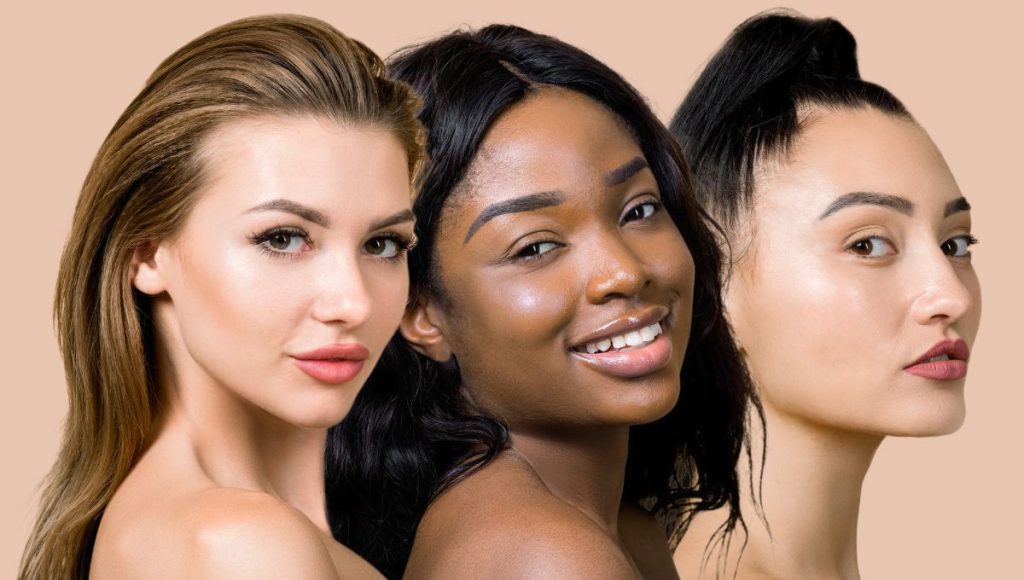
Your routine doesn’t end with products. The choices you make daily — how you wash, touch, and treat your skin — can speed up or slow down dark spot fading. The goal? Support your cream’s efforts with every action.
Make these subtle habits your norm, and you’ll amplify every treatment result.
Avoid Friction and Picking
Aggressively scrubbing or picking at your skin will set you back. Seriously.
- No picking scabs, pimples, or healing spots
- Pat skin dry, don’t rub harshly with towels
- Use silk pillowcases for gentler night-time support
- Minimize consistent stress or tugging on skin with tools or makeup wipes
Protect your skin’s healing process like you would a broken nail — hands off!
Switch to Non-Comedogenic Products
Pore-clogging makeup or moisturizers can trigger acne, which then becomes PIH (post-inflammatory hyperpigmentation).
- Opt for oil-free and non-acnegenic foundation
- Avoid heavy fragrances on face products
- Use cleansers that balance without over-drying
- Remove makeup thoroughly before bed
In other words – let your skin breathe and repair freely.
Conclusion
At the end of the day, reaching for a dark spot fade cream isn’t just about treating a mark. It’s about restoring clarity, confidence, and consistency in your skin journey.
With the right products—like Nasola Kojic Acid Cream, Nasola Triple Acid Facial Radiance Pads, and Nasola Lemon Turmeric Kojic Acid Exfoliating Pads—you’re equipping your routine with safer, effective tools that are aligned with your skin’s long-term well-being.
Don’t chase fast results at the cost of your skin’s balance. Heal, protect, treat—on repeat.
Your glow is coming. And this time? It’s here to stay.
Frequently Asked Questions
One of the most effective options is the Nasola Dark Spot Corrector Cream, which contains kojic acid, turmeric, and niacinamide. These ingredients work together to brighten uneven skin tone without causing irritation, even for sensitive or dry skin types.
Yes! Using exfoliating pads like the Nasola Triple Acid Facial Radiance Pads or Nasola Lemon Turmeric Kojic Acid Exfoliating Pads enhances your fade cream’s absorption and efficacy. Just don’t exceed 2–3 times a week to avoid over-exfoliation.
Dark spot fade creams typically start showing visible results in 2–4 weeks. However, for deeper or older pigmentation, it can take up to 8 weeks. Be consistent and use SPF to speed up the process.
Yes, kojic acid is generally safe in low concentrations, especially in formulations like the Nasola Kojic Acid Cream, which is designed for gentle, daily application to fade dark spots over time without irritation.
Absolutely. Turmeric is a natural anti-inflammatory and antioxidant that helps calm redness and fade discoloration. It’s a standout ingredient in the Nasola Lemon Turmeric Kojic Acid Exfoliating Pads.
Not necessarily. Mild dryness or peeling can occur as your skin adjusts. Try hydrating more, buffering with moisturizer, or reducing usage. The Nasola Kojic Acid Cream is a reliable option for gentle brightening.
Yes. Daytime sun exposure will undo your nighttime progress. Always wear SPF 30+ daily to ensure existing spots fade and new ones don’t form.
Yes. Fade creams like those from Nasola use ingredients that work effectively across all skin tones, including melanated skin that’s more prone to post-inflammatory hyperpigmentation.
A fade cream treats broader areas for tone correction, while a corrector like the Nasola Dark Spot Corrector Cream targets stubborn spots with more concentrated ingredients.
Keep your fade creams in a cool, dark place away from direct sunlight to preserve the integrity of active ingredients like kojic acid and niacinamide.

